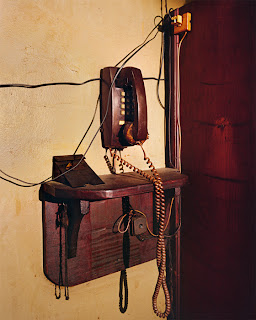By Sean Coughlan BBC News education correspondent "Dark tourism" - where visitors travel to sites of death, brutality and terror - is to be the subject of a dedicated centre for academic research at the University of Central Lancashire.
The Institute for Dark Tourism Research is said to be the world's first such academic centre.
Researchers say they want to examine why people "feel compelled to visit sites like Auschwitz or Ground Zero".
Director Philip Stone says such places make people face their "own mortality".
The institute, which is being launched on Tuesday, will look at the relationship between places with terrible associations - and tourists who use their leisure time to visit them.
Disaster trips Dr Stone says that this includes places such as the site of the 9/11 attacks in New York, Nazi concentration camps and the sites of disasters such as the Chernobyl nuclear accident in the Ukraine.
He says that going to such places becomes a form of "secular pilgrimage", with people feeling they need to visit them.
Dr Stone says his research suggests that visitors want to find some kind of meaning in these places of suffering.
Four hundred years ago they were innocent people who were killed. Now they're a tourist destination”
Dr Philip Stone Institute for Dark Tourism Research Visitors try to empathise with victims and imagine the motivations of the perpetrators, he says, and then visitors have a sense of relief that they can step back into the safety of their own lives.
"People feel anxious before - and then better when they leave, glad that it's not them," says the centre's executive director.
His research has looked at people who visit such sites as part of a wider holiday, rather than people who have specifically travelled to see them.
He describes a couple who reported that they only went to the Ground Zero site at the end of a visit to New York, because going any earlier would have upset them for the rest of the holiday.
But they still clearly felt compelled to visit, he says.
Any scene of disaster or violence is going to have an uneasy relationship with tourism - in terms of how sensitively such events are presented, and how visitors are expected to behave.
But he says the "packaging" of such sites can be what people experience, rather than a recognition of the awful real-life events which are being commemorated.
There is a "blurred line between memorialisation and tourism", he says.
'Long history' He also believes that an important part of the attraction of such grim places is to allow people to consider death, from a comfortable distance.
In a culture that usually removes death from the public domain, such different places share a common link as scenes strongly associated with the loss of life, he says.
"It's a way for a secular society to reconnect with death."
Dr Stone, who worked in the tourism industry before becoming an academic, says that there is a long history of dark tourism.
"It's always been there. You could say that a medieval execution was an early form of dark tourism."
More than 100 delegates from around the world will attend an inaugural symposium at the university.
Among the future research plans are to look at people who made trips to see the damage caused by earthquakes in Italy, and to examine the visitor industry around the Pendle Witches in Lancashire.
"Four hundred years ago they were innocent people who were killed. Now they're a tourist destination," says Dr Stone.
-------------------------------------------------------------------------------------------------------------------------------------------
This was an interesting piece taken from the BBC News website. I thought it would be good to post here as its in keeping with why we as photographers choose to photograph things as such disastrous events. I am not talking about photojournalists here, but perhaps documentary should be put out there, of which too many of us think of as the same thing. Of course this all boils down to my thoughts on Disaster Porn which I have mentioned on here many times before as it is something I despise in the Fine Art World (in brackets). One of the comments in the above article was that this fascination with visiting memorials of disaster was just an extension of rubber necking in a car while driving past an accident. Something we are all guilty of I am sure, and worth thinking about.
The whole matter surrounding why we humans are so morbidly interested in looking at 'not very nice things' is a huge subject and probably best left alone on here. Having said that, It would of been a good topic to cover regarding my MA paper. It could of been called, 'Why We Photograph...... Horrible Things'..
 My wife made the switch to digital almost ten years ago with the release of the Canon 1DS system. She hated the format of the camera, the feel of it, and the overall usage. But working a lot in editorial, it was the obvious choice for her career path. What was left in the cupboard under the stairs was a Peli Case containing two Hassleblad 500CM's. I remember how much she loved those cameras and its sad to think they for her at least, they are now redundant.
My wife made the switch to digital almost ten years ago with the release of the Canon 1DS system. She hated the format of the camera, the feel of it, and the overall usage. But working a lot in editorial, it was the obvious choice for her career path. What was left in the cupboard under the stairs was a Peli Case containing two Hassleblad 500CM's. I remember how much she loved those cameras and its sad to think they for her at least, they are now redundant.















